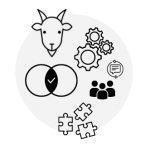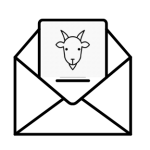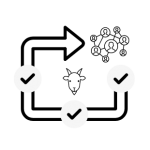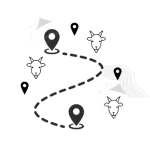Welcome to the Gathering for Open Agricultural Technology!
The technologies that produce our food and the data about our food system should be public, and enable control by the farms and farmers that produce it. Together, we can collectively address the problems which prevent the creation of advanced, high quality open technology and its adoption.
Problem
Information about our food system should be public or easy-to-share.
Unfortunately, that is often not the case. Food is currently produced by a mix of private and public entities, and information about our food system can be opaque, hard-to-find, or proprietary and farmers may have limited control of the on-farm data they generate or ability to improve the tools they use.
Closed data ecosystems can hinder our ability to produce food equitably and sustainably.
Agricultural startups are often venture-funded, with interest veering toward capitalizing on farm data. Controlling such data, not just machines or sensors, is considered the most valuable game in town (at least in the short term). By opening up the ag-tech ecosystem we can benefit growers and other crucial stakeholders.
Fortunately, there is also significant interest in creating open source hardware and software to increase transparency in the food chain, allow for data sharing among groups, and engage the public and make the benefits of shared data available to all. Though the number of projects is growing, they tend to be small, isolated within universities or small companies, and disconnected from one another. The result is duplication of efforts, hard to find projects, and disconnected parts producing incompatible data. The lack of coordination means that as technology rapidly changes, closed-source companies are locking up the machinery, sensors, data, and varieties of the future.
The Goals of GOAT
Coordinate existing development
there are many organizations working on open ag software and hardware today with overlapping interests. Let’s get together! Let’s talk about building software together BEFORE we spend time and money, not after!

Invite new development
Let’s make a place where newcomers can easily find developers and users with overlapping experiences. People evaluating open vs closed ag software/hardware should find a thriving, engaged community which can make their work easier, faster, and better.

Aligning technology and actual users
Finding people to try, test, break, and give feedback on new technology is hard but critically important to making technology relevant and useful. By bringing users and developers together with open lines of communication, we can increase the utility of open technology in ag across the board.

Creating a GOAT Roadmap
If we collectively have a plan, then we can all contribute more effectively. Let’s reduce duplication of efforts, focus on common areas we all need, and put the effort of contributors into a broader context for funders so they can see the big picture.

Stay in the Loop
Get connected
Join the forum, jump into the RIOT space (links in footer), or just enter your email address below to keep updated about the conference:
